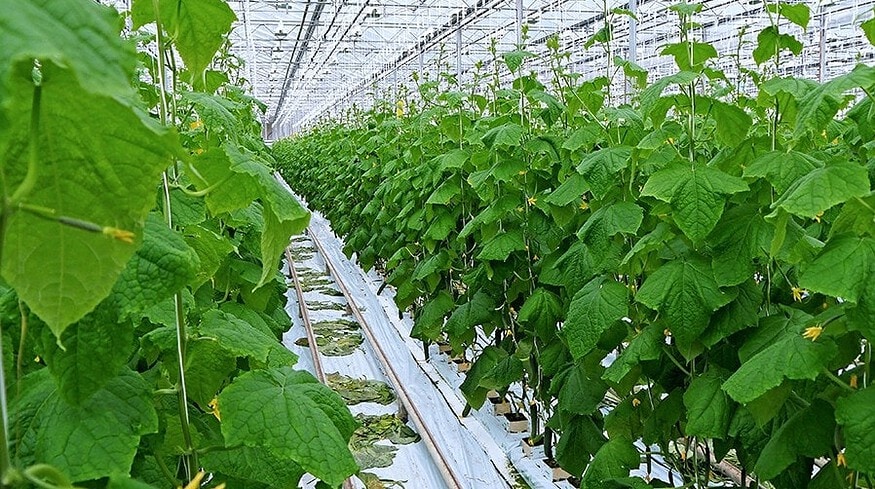Greenhouse business to continue growing in Russia

The development of the greenhouse business in Russia is in full swing and clearly is not going to stop. It is noteworthy that the production of vegetables under cover grows both due to the expansion of cultivated areas, and due to the construction of modern greenhouses and the introduction of advanced technologies. And while in 2017 such greenhouses comprised 45%, by 2025 their share can increase to 70%.
As a result, over the past five years, the yield of vegetables under cover has gone up: while it could be estimated between 650 and 700 thousand tons in 2014, it reached 1 to 1.1 million tons in 2018.
Cucumbers prevail among the vegetables grown in greenhouses, while tomatoes are subordinate. However, there is every reason to believe that the situation will change dramatically in the coming years: the market demand for cucumbers under cover is about to be met, while tomatoes are clearly not enough, so major investments can be made in their cultivation.
At the same time, there are changes in the geography of the construction of greenhouse complexes. While Siberia and the Far East are sorely lacking greenhouse complexes, the south of Russia is in fact saturated with them, so, new large objects should not be expected, except in the North Caucasus. It must be said, though, that the construction of greenhouse complexes is planned or has already been launched in the central part of Russia and in the North – West. For example, in Chuvashia the first construction stage of the Novocheboksarsk large greenhouse complex has been recently initiated (up to 20 thousand tons vegetables per year will be grown in it when fully loaded).
There is a curious trend towards increased attention from foreign investors to covered vegetable production in Russia. On the other hand, local authorities are willing to provide support to companies that intend to build greenhouses in their regions. The forms of support will vary, from offering sites for placement to administrative preferences.
Of course, the greenhouse business faces a number of challenges. The high cost of bank lending, difficulties with connecting to power grids, and unpredictable purchasing policies of retail chains are some of them. But these could not stop its development.
The cultivation of vegetables under cover, for its part, entails the demand for mineral fertilizers. Here, the change in the structure of orders has become noticeable: while previously potassium nitrate used to dominate, now there is an increase in the consumption of water soluble fertilizers — monopotassium phosphate, potassium sulfate, etc. This is due to their best effect of action providing a large increase in the crop yield.
‘Greenhouse farms historically have been key buyers of our water soluble fertilizers in Russia, since such product qualities as the absence of harmful contaminants and complete solubility in water are extremely important. And today we are witnessing the growth of the domestic market of water soluble fertilizers. The increase in the total area of greenhouse complexes is one of the causes. This is a positive trend, indeed, and we are ready to increase the sales volume of our products in Russia,’ said Edward Gurary, Commercial Director of Cashmere Capital (the exclusive trading house of the Hydrometallurgical Plant, the only Russian manufacturer of the entire phosphor line of water soluble monoproducts).
We have good reason to expect an increase in the yield of greenhouse vegetables in the coming years: by the end of 2019, it can amount to about 1.2 million tons; in 5 years, it can reach the level of 1.6-1.8 million tons.
Enjoyed this story?
Every Monday, our subscribers get their hands on a digest of the most trending agriculture news. You can join them too!
















Discussion0 comments